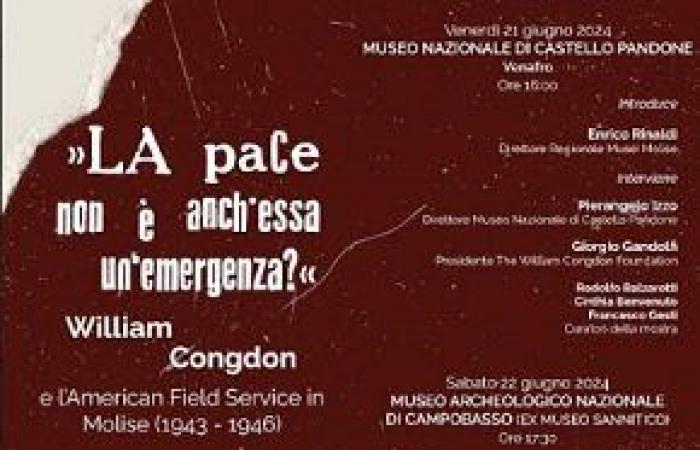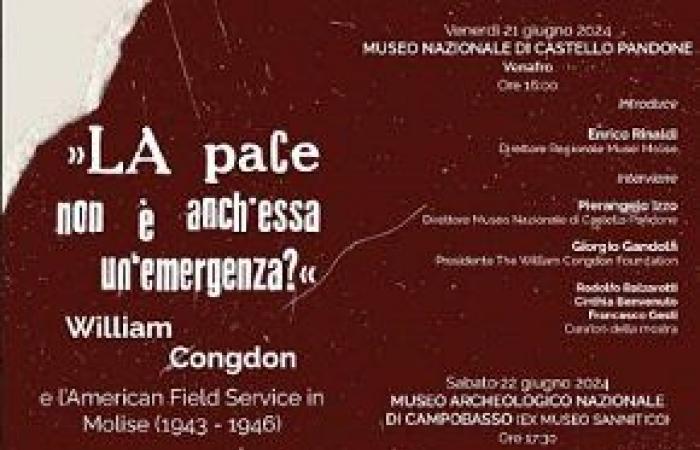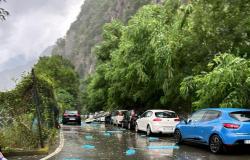As part of the programs to enhance the local artistic and cultural heritage, an event is proposed
exhibition distributed across three Molise museums aimed at recalling, through the writings and images of an artist
American who was among the protagonists of the New York School in the immediate post-war period, the tragic events of which
the people of Molise were the victims between the autumn of 1943 and the spring of 1944, when the Allied armies
they faced Nazi troops for many months on the so-called Gustav Line, a long system of fortifications
the Sangro river culminating in the formidable bastion of Montecassino.
The exhibition recalls a series of still unknown chapters of these well-known events.
First of all, the presence of the legendary association of volunteer ambulance workers of the American Field Service and the
their commitment in favor of the civilian population in a spirit alien to the logic of war for which it is the spokesperson
Congdon himself in his letters, in his memoir In the Death of One (hence the quote in the title
of the exhibition) and in the drawings made on site, full of a poignant participation in human suffering.
And then, still in the midst of the war, his collaboration together with his ambulance colleague John Harkness,
prestigious architect, drafting an urban plan for the city of Isernia, semi-destroyed by bombing; And
furthermore the relationship with the Poles of the 2nd Army Corps with whom he shared the bloody final assault on
Cassino in May 1944; and again his return to Molise in 1946, together with a Quaker mission,
for the reconstruction of countries destroyed by war, anticipating the interventions of the Marshall Plan and UNRRA.
William Condon the artist has assigned absolute centrality to the experience of testimony. He thought of his own
gesture as a way to accurately record reality. Faithful to his obligation to pass on what he saw, he has
transformed the singularity of an event into a sequence with a cognitive depth, destined to be
understood and shared. He was an artist and a special correspondent who extracted glimmers of life from the war,
figures, faces, situations, violence, desperation, abysses. But he went beyond any realism; Condgon has conjugated
vision and visionaryness he filmed heartbreaking moments that he then transcended.
About thirty oil works by the artist, chosen from all periods of his long creative journey and placed in the
headquarters of Castello Pandone in Venafro, crowns the historical part with images documenting the persistence of
wounds of war in the very body of the painting.
Furthermore, about ten drawings made during the intervals of his ambulance service, documenting the drama
of the war, between 1942 and 1945, will be hosted in the headquarters of the National Archaeological Museum of Campobasso
(former Samnite Museum).
In Civitacampomarano, a small exhibition of pastels executed by Congdon presents, with a brighter note and
expanse, a further aspect of the work of this still little-known post-World War II master.
Isn’t Peace also an emergency?” – Wiliam Congdon and the American Field Service in Molise, 1943-1944
National Archaeological Museum of Campobasso (former Samnite Museum), National Museum of Castello Pandone, Venafro, Castle of Civitacampomarano 21 June – 24 October 2024







